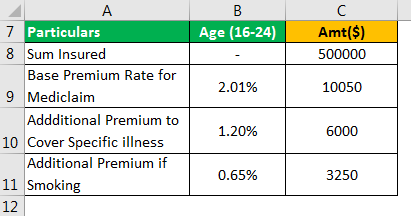How to Calculate Insurance Premiums

How Insurance Premiums Are Calculated: A Look Behind the Curtain:
Ever received an insurance quote and wondered how the company arrived at that specific number? It can often feel like a figure pulled from thin air. But the price you pay for your insurance policy, known as the premium, is far from arbitrary. It’s the product of a meticulous and data-driven process called risk assessment, designed to predict the likelihood that you will file a claim.
Understanding the factors that go into this calculation is crucial. It not only demystifies your bill but also empowers you to take control of the elements you can change to potentially lower your costs. This guide will pull back the curtain on how insurers calculate premiums for different types of policies and what you can do to secure the best rate possible.
What is an Insurance Premium?:
At its core, an insurance premium is the amount of money you pay to an insurance company on a regular basis (monthly, quarterly, or annually) to keep your policy active. These payments are the lifeblood of the insurance industry.
The fundamental concept behind insurance is shared risk. Your premium is pooled together with the premiums of thousands of other policyholders.3 This large pool of money is then used to pay for the unexpected losses a car accident, a house fire, or a medical emergency experienced by a small number of policyholders in the group. Your premium is your contribution to this collective financial safety net.
The Core of the Calculation: Risk Assessment:
Insurance companies employ professionals known as actuaries to calculate risk. These are experts in mathematics, statistics, and financial theory who analyze vast amounts of data to predict the probability of future events.5 Their guiding principle is simple: The higher the likelihood that an insurer will have to pay a claim on your behalf, the higher your premium will be.
The final premium you’re quoted is generally made up of three parts:
- Cost of Claims: The amount the insurer predicts it will need to pay out for your specific risk profile and policy type.
- Administrative Costs: The expenses required to run the business, including salaries, marketing, and technology.
- Profit Margin: A percentage built in to ensure the company remains financially healthy.
Key Factors Influencing Your Life Insurance Premium:
Life insurance premiums are calculated based on one primary factor: your life expectancy. To determine this, actuaries examine a wide range of personal data points.
Personal Health and Medical History
This is the most heavily weighted category. Insurers need a clear picture of your current health and your risk of developing future medical conditions.
- Age and Gender: Youth is a significant advantage. A healthy 25-year-old will pay substantially less than a 55-year-old for the same coverage because their risk of dying is statistically lower. Gender also plays a role, as women have a longer average life expectancy than men, often resulting in slightly lower premiums.
- Health Status: Most policies require a medical exam and a review of your medical records. Insurers will look at your height, weight, blood pressure, cholesterol levels, and results from blood and urine tests. Chronic conditions like diabetes or heart disease will increase your premium.
- Smoking Status: Using tobacco is one of the single most impactful factors. Smokers and other nicotine users can expect to pay two to three times more for life insurance than non-smokers because of the well-documented health risks.
Lifestyle and Hobbies:
Your habits and activities outside of work give insurers insight into your personal risk tolerance.
- Occupation: A person with a desk job faces fewer daily risks than a commercial fisherman, a pilot, or a logger. High-risk occupations lead to higher premiums.
- Dangerous Hobbies: If you enjoy thrill-seeking activities like skydiving, rock climbing, or auto racing, the insurer will view you as a higher risk and increase your rate accordingly.
- Driving Record: A history of DUIs, reckless driving, or multiple speeding tickets can signal a higher mortality risk and will negatively impact your life insurance premium.
The Policy Itself:
Finally, the specifics of the policy you choose will directly influence the cost.
- Type of Insurance: As covered previously, term life insurance (which covers a specific period) is far more affordable than permanent life insurance (which covers your entire life and builds cash value).
- Coverage Amount: The size of the death benefit is a primary driver of cost. A $1,000,000 policy will have a higher premium than a $250,000 policy.
- Term Length: For term policies, a longer guarantee period costs more. A 30-year term policy will be more expensive than a 10-year term policy because the insurer is on the hook for a longer period.
How Car Insurance Premiums Are Calculated:
Auto insurance calculations are based on the risk of an accident, theft, or other damage. The factors are different from life insurance but follow the same principle of risk assessment.
Your Driving Profile:
- Driving Record: This is paramount. A clean record with no accidents or violations will earn you the best rates. A recent at-fault accident or a speeding ticket will cause your premium to rise.
- Location: Where you live and park your car matters. Densely populated urban areas have higher rates of accidents, theft, and vandalism, leading to higher premiums than in rural areas.
- Age and Driving Experience: Young drivers, especially teenagers, have the highest accident rates and therefore pay the highest premiums. Rates typically begin to decrease after age 25.
The Vehicle You Drive:
- Make and Model: The cost to repair or replace your vehicle is a major factor. A luxury sedan or a high-performance sports car will cost more to insure than a standard, budget-friendly commuter car.
- Safety Ratings: Vehicles with high safety ratings and features like airbags, anti-lock brakes, and anti-theft devices often qualify for discounts.24
Your Coverage Choices:
- Types and Limits of Coverage: The more coverage you buy, the higher your premium. State-minimum liability is cheap, but adding collision and comprehensive coverage will increase the cost.
- Deductibles: Your deductible is the amount you agree to pay out-of-pocket before your insurance kicks in. Choosing a higher deductible (e.g., $1,000 instead of $500) will lower your premium.
Conclusion: Empowering Your Choice
While you can’t change your age or your past medical history, you have significant control over many factors that determine your insurance premiums. By understanding what insurers are looking for, you can take proactive steps like quitting smoking, maintaining a clean driving record, and choosing the right level of coverage to secure the most affordable rates. Knowledge is power, and knowing how your premium is calculated allows you to shop smarter and find the policy that best fits both your needs and your budget.

